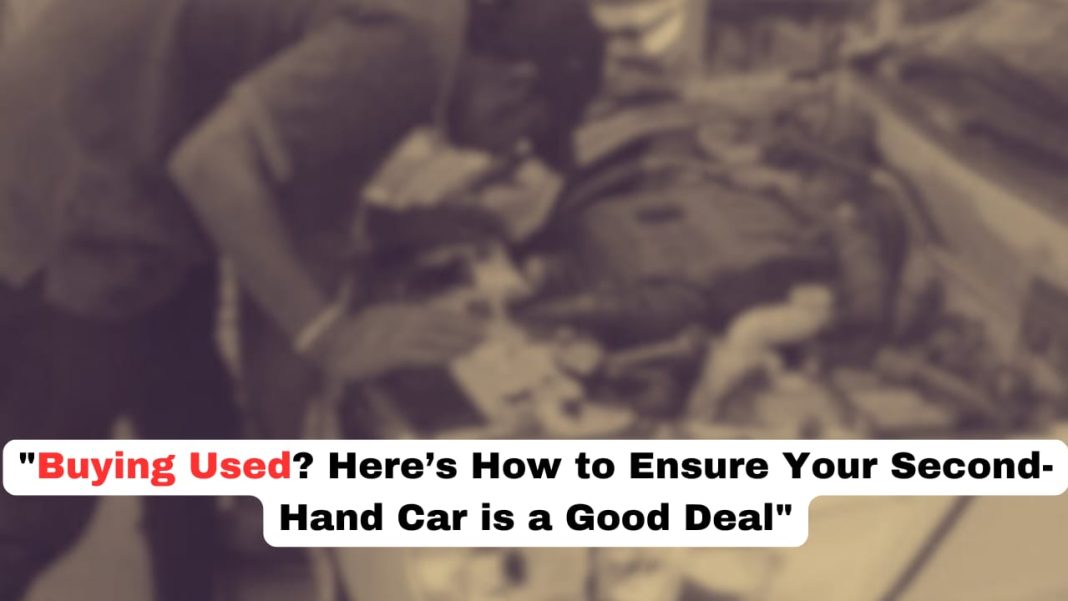Digital News Guru:
Buying a second-hand car can be a smart financial decision, offering great value compared to purchasing a new vehicle. However, it also comes with risks, as you may encounter hidden problems that can lead to costly repairs. To ensure that you make a wise purchase, it’s essential to conduct a thorough inspection and verification process. This article outlines the best practices for checking second-hand cars, enabling you to make an informed decision and avoid potential pitfalls.
- Do Your Research
Before you even visit a dealership or meet a private seller, start by doing your research. Familiarize yourself with the specific make and model you’re interested in. Look up common issues associated with those models, average market prices, and user reviews
- Set a Budget
Establish a realistic budget that includes not only the purchase price but also registration fees, insurance, taxes, and potential repairs. Remember, the initial price of the car isn’t the only cost to consider. Setting a budget helps narrow your options and prevents you from overspending.
- Obtain a Vehicle History Report
One of the first steps when checking a used car is to obtain a vehicle history report, crucial information about the vehicle’s past, including:
- Accident history: Whether the car has been involved in any collisions.
- Title issues: Information on whether the car has a clean title or has been salvaged.
- Service records: Maintenance history and previous ownership details.
- Odometer readings: Verification of mileage to spot potential odometer fraud.
Having this report can save you from purchasing a car that has a problematic history.
- Conduct a Visual Inspection
When you finally see the car, start with a visual inspection. Here are some aspects to pay attention to:
- Exterior Condition: Check for dents, scratches, and rust. Ensure that the paint is consistent across the car; mismatched colors may indicate bodywork after an accident.
- Tires: Examine the tire tread depth and look for uneven wear, which could signal alignment or suspension issues.
- Under the Hood: Open the hood and inspect for any signs of leaks, corrosion, or rust. The engine should be clean, and there shouldn’t be any oil or fluid leaks.
- Interior Condition: Check the upholstery, dashboard, and controls. Make sure all electronics work, including lights, windows, and the audio system.
- Check Underneath the Car
Use ramps or a jack to inspect the underside of the vehicle. Look for rust, signs of leaks, or damage to the exhaust system. A mechanic’s inspection is highly recommended to catch any hidden issues that may not be apparent during a visual inspection.

- Take a Test Drive
A test drive is crucial for assessing the car’s performance. Here are some tips for your test drive:
- Listen for Unusual Noises: Pay attention to the engine and any other sounds that may indicate mechanical issues.
- Check Acceleration and Braking: The car should accelerate smoothly and the brakes should respond effectively without any squeaking or grinding.
- Steering and Suspension: Ensure that the steering is responsive and that the car handles well over bumps and turns.
- Get a Professional Inspection
Even if you feel confident in your assessment, it’s wise to get a professional mechanic to inspect the car. A mechanic can identify issues that may not be visible to an untrained eye, such as problems with the transmission, engine, or other critical systems. This step can save you from future headaches and expenses.
- Verify Ownership and Paperwork
Ensure that the seller is the legitimate owner of the car. Ask for the title and check that the name matches the seller’s identification. Verify the Vehicle Identification Number (VIN) on the title and the car to ensure they match. Also, request maintenance records and any warranty information that may still apply.
- Negotiate the Price
Once you’ve completed your inspection and feel confident about the car’s condition, it’s time to negotiate. Use the information gathered during your research and inspection to justify your offer. If any issues were identified during the inspection, use these as leverage to negotiate a lower price.
- Trust Your Instincts
Finally, trust your instincts. If something feels off about the deal or the seller, don’t hesitate to walk away. There are plenty of second-hand cars on the market, and it’s better to wait for the right one than to rush into a potentially problematic purchase.
Conclusion
Buying a second-hand car can be a rewarding experience if you take the right steps to ensure you’re making a sound investment. By conducting thorough research, obtaining a vehicle history report, performing visual and mechanical inspections, and involving a professional mechanic, you can significantly reduce the risks associated with purchasing a used vehicle. Always remember to trust your instincts and prioritize safety over savings. With these guidelines, you’ll be well-equipped to find a second-hand car that suits your needs and budget.
You May Also Read: Budget-Friendly Smartwatches for Health Enthusiasts Under Rs 3000








